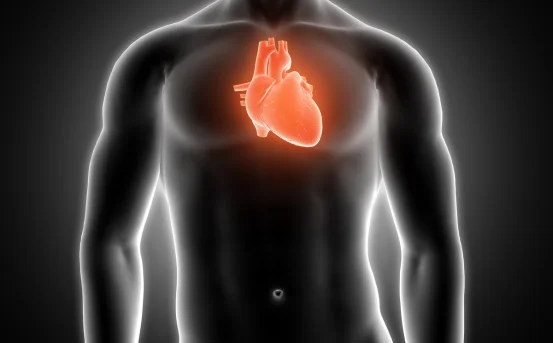Foot disease is a broad term used to describe any disorder, infection, or abnormal condition that affects the foot. From common problems like fungal infections to more serious issues like diabetic foot ulcers, foot diseases can significantly affect mobility and quality of life if left untreated.
Foot diseases can range from mild, temporary issues like athlete’s foot or toenail fungus to more severe, chronic conditions such as diabetic foot ulcers, peripheral artery disease, and structural deformities. These problems not only cause discomfort or pain but can also lead to serious health complications, especially if left untreated. In individuals with underlying health conditions like diabetes, obesity, or circulatory disorders, foot diseases may even result in mobility loss or, in extreme cases, limb amputation.
What is Foot Disease?
Foot disease refers to a variety of medical conditions that impair the structure, function, or appearance of the feet. These conditions may be caused by infections, trauma, systemic diseases, poor circulation, or deformities. While some foot issues are minor and easily treated, others can become chronic or life threatening, especially in people with underlying conditions such as diabetes or peripheral artery disease.
The human foot contains 26 bones, 33 joints, and more than 100 muscles, tendons, and ligaments. It is an intricate structure that bears the weight of the body and endures pressure throughout daily activities. Because of its constant use and exposure, the foot is susceptible to a range of diseases and conditions that can cause pain, discomfort, and impaired mobility.
Common Types of Foot Diseases
Several types of foot diseases are prevalent, ranging from infections to structural abnormalities. Here are some of the most common
- Fungal Infections :- Fungal infections like athlete’s foot and onychomycosis (fungal nail infection) are among the most widespread foot diseases. These conditions thrive in moist environments and are often contracted in public showers, gyms, or swimming pools.
- Diabetic Foot :- People with diabetes are particularly prone to foot disease due to poor circulation and nerve damage (neuropathy). This can lead to diabetic foot ulcers, infections, and in severe cases, gangrene or amputation.
- Plantar Fasciitis :- This condition involves inflammation of the plantar fascia the thick band of tissue connecting the heel to the toes. It causes heel pain, especially in the morning or after periods of inactivity.
- Bunions and Corns :- Bunions are bony bumps that develop at the base of the big toe, while corns are thickened skin caused by repeated pressure or friction. Both conditions can cause pain and interfere with walking.
- Ingrown Toenails :- When a toenail grows into the surrounding skin, it can cause pain, redness, swelling, and infection. Improper nail trimming or wearing tight shoes can contribute to this condition.
- Peripheral Artery Disease (PAD) :- PAD restricts blood flow to the limbs, especially the feet, and can result in pain, numbness, and slow-healing wounds. It’s often a complication of diabetes or cardiovascular disease.
Causes of Foot Disease
The causes of foot disease are varied and often depend on the individual’s lifestyle, overall health, and existing medical conditions. Some of the most common causes include
-
Poor Foot Hygiene :- Not washing and drying the feet properly can lead to infections, especially fungal ones.
-
Improper Footwear :- Wearing shoes that do not fit well or offer inadequate support can contribute to several foot problems like bunions, blisters, and plantar fasciitis.
-
Chronic Diseases :- Conditions such as diabetes, arthritis, and vascular disease are major contributors to foot disorders.
-
Injuries :- Accidents, sprains, or fractures can damage the foot’s structure and lead to chronic pain or deformity.
-
Age and Activity Level :- Aging and repetitive stress from activities like running or standing for long periods increase the risk of developing foot issues.
Symptoms of Foot Disease
Recognizing the early symptoms of foot disease is critical for timely treatment and prevention of complications. Common signs and symptoms to watch out for include
-
Persistent foot pain or discomfort
-
Swelling in the feet or ankles
-
Redness, warmth, or changes in skin color
-
Open sores or ulcers that are slow to heal
-
Numbness, tingling, or burning sensations
-
Changes in the shape of the foot or toes
-
Foul odor or discharge from wounds or infections
It is essential to consult a healthcare provider or a podiatrist if any of these symptoms persist or worsen over time.
Diagnosis and When to See a Doctor?
Diagnosing foot disease typically involves a physical examination, a review of medical history, and in some cases, diagnostic tests like X-rays, MRI, blood tests, or cultures. For individuals with diabetes or poor circulation, regular foot checkups are recommended to detect potential issues early.
You should see a doctor or foot specialist if you experience
-
Sudden, unexplained foot pain
-
Open wounds or sores that do not heal
-
Signs of infection (fever, redness, swelling)
-
Difficulty walking or bearing weight
-
Numbness or tingling that does not go away
Treatment Options for Foot Disease
The treatment for foot disease depends on its cause, severity, and the patient’s overall health. Some common treatment methods include
- Medication :- Topical or oral antifungal creams and antibiotics are often used to treat infections. Anti inflammatory drugs or corticosteroid injections may be used for inflammatory conditions like plantar fasciitis or arthritis.
- Wound Care :- For diabetic foot ulcers or open wounds, proper wound care is critical. This may involve cleaning the wound, applying dressings, and in some cases, using advanced therapies like negative pressure wound therapy or hyperbaric oxygen therapy.
- Physical Therapy :- Stretching exercises, physical therapy, and orthotic support can help improve mobility and reduce pain in conditions like flat feet, plantar fasciitis, and tendonitis.
- Surgery :- In severe cases, surgical intervention may be necessary. Common procedures include bunion correction, tendon repair, removal of infected tissue, or even amputation in cases of severe diabetic foot complications.
Preventing Foot Disease
Prevention is always better than cure, especially when it comes to foot health. Here are a few steps to keep your feet healthy
-
Practice good hygiene :- Wash your feet daily and dry them thoroughly, especially between the toes.
-
Wear proper footwear :- Choose shoes that offer good support and fit well.
-
Keep nails trimmed :- Cut toenails straight across to avoid ingrown nails.
-
Stay active :- Regular exercise improves circulation, which is vital for foot health.
-
Check your feet regularly :- Look for any changes, especially if you have diabetes or circulation issues.
Conclusion
Foot disease encompasses a wide range of conditions that can affect people of all ages. While many of these problems are preventable or treatable when caught early, neglecting foot health can lead to serious complications. By understanding what foot disease is, recognizing its symptoms, and taking preventive measures, you can ensure better mobility, comfort, and overall well being.























